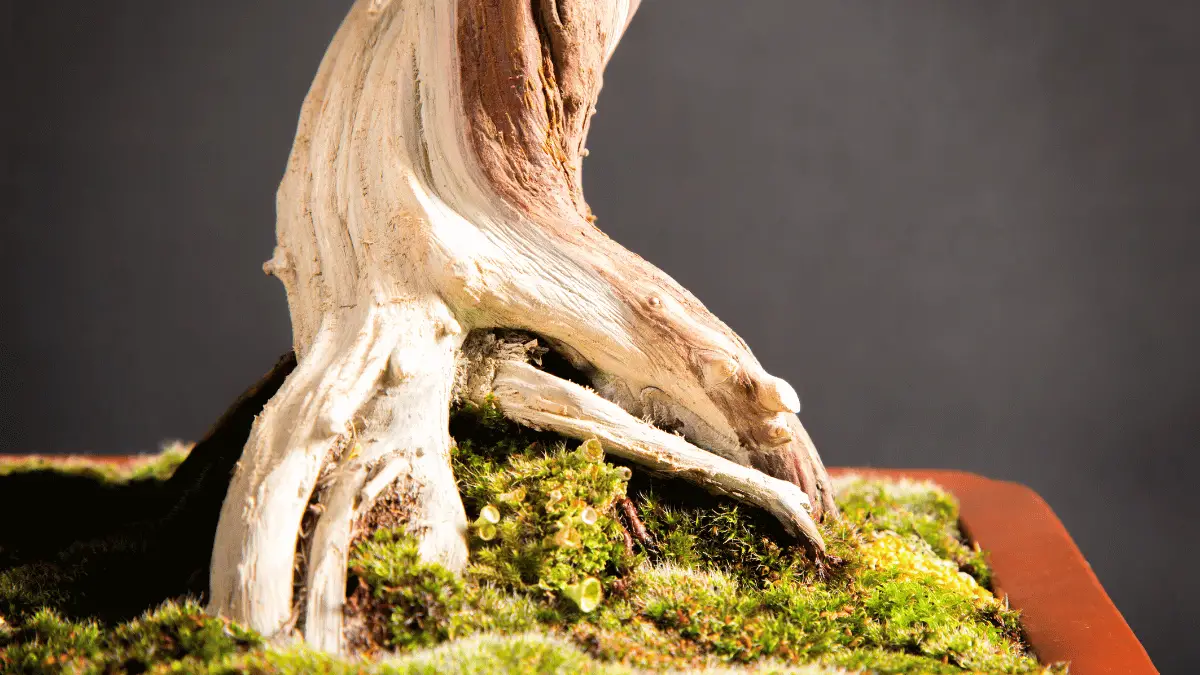Among the many fascinating aspects of bonsai, the nebari, or exposed roots, play a significant role in showcasing the age and stability of these miniature wonders.
In this comprehensive guide, we will discuss the techniques and essentials of creating beautiful nebari on bonsai trees.
I am sure you will learn something new in this post even if you are growing bonsai for many years.
Why Expose Bonsai Roots:
The reason why surface roots are important is that they help us to see the age of a tree. In younger trees, roots mostly remain under the soil and are rarely visible. With age, they start to show up above the soil level. The older the tree the more roots we are likely to see on the surface.
A good amount of exposed roots also shows stability. A tree with wide-spreading roots is more likely to survive natural catastrophes like storms.
Beyond their functional aspects, exposed roots contribute to the visual allure of bonsai. Well-developed nebari exhibits elegance and harmony, evoking a sense of strength, maturity, and natural beauty.
Evenly-sized roots that spread in all directions create a balanced and aesthetically pleasing composition. Avoiding tangling or crossing of roots ensures a harmonious and visually appealing nebari display.
However, not all trees have good surface root growth. Various factors influence the growth of surface roots in bonsai trees. Species, local climate, soil conditions, and other environmental factors play significant roles in determining the extent and quality of nebari development.
Some tree species naturally possess a greater propensity for surface root growth, while others may require specific techniques to encourage their emergence.
Luckily for us, there are techniques that can help us in creating exposed roots.
How to Create Nebari or Exposed Roots on Bonsai:
A nebari is the root collar and exposed roots of a bonsai tree. Hiding the massive root ball of your tree can be one of the biggest challenges when trying to create this look.
The first step in making a new nebari is getting a suitable tree. The best candidates for nebari development are bonsai such as pines, elms, and hawthorns that have thick trunks and large root systems.
Once you have your tree, you need to dig it up and repot it so that you can see the roots. Now you need to find a way to expose those roots on as wide an area as possible – this will help them grow outward into their new position.
There are two ways you can create a nebari, you can either prune the roots of the tree that are growing downwards or you can apply a technique called air layering.

When you remove the vertically growing roots from the plant it forces them to rely on existing shallow lateral roots. so these roots will grow bigger and will form new lateral roots.
It also tends to flare out the base of the tree so the trunk seems even older.
Do this process every time you repot the bonsai. some bonsai growers also suggest placing the tree on a stone while growing the tree to encourage lateral growth, but this is not essential.
When you cut off the vertical roots of the tree it will grow lateral roots regardless of whether you place the tree on a hard surface.
In the second method, we partially block the nutrient supply of the tree by tightly wrapping copper wire around the base of the tree. As the nutrient supply reduces the tree will try to solve this problem by growing lateral roots above that copper wire. As the plant grows more there will be more lateral roots
Essentials of a good Nebari:
A nebari or the exposed surface roots of a bonsai tree is considered to be one of the most important characteristics of an expensive bonsai tree. In fact, in China where bonsai originated, the quality of a tree’s nebari was more highly valued than any other characteristic.
Here are some essential features of good bonsai nebari:
- When you are exposing the bonsai roots only the upper surfaces of the roots should be showing above soil level.
- The roots should be evenly sized roots and not just a few really thick ones mixed up with finer roots.
- The exposed roots must spread out in all directions. roots that are only spread in one of two directions look ugly and don’t give the impression of strength and stability.
- The roots must not tangle or cross over with each other, it should be evenly spread out.
- Try to keep all the roots at the same level. One root should not be above others.
Final Thoughts:
It can take a lot of time and effort to create an exposed nebari (which is probably why you haven’t seen many of them in nurseries — it takes a lot of work). But creating exposed roots on your bonsai is a very rewarding achievement, both visually and psychologically.
I hope you like the information. Please feel free to share the post with other bonsai growers.
